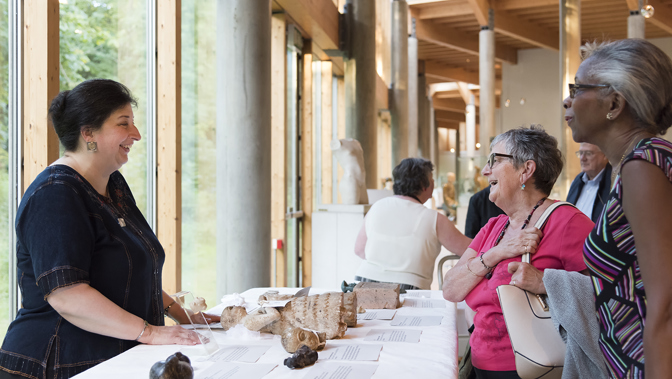Bringing the Burrell back to life
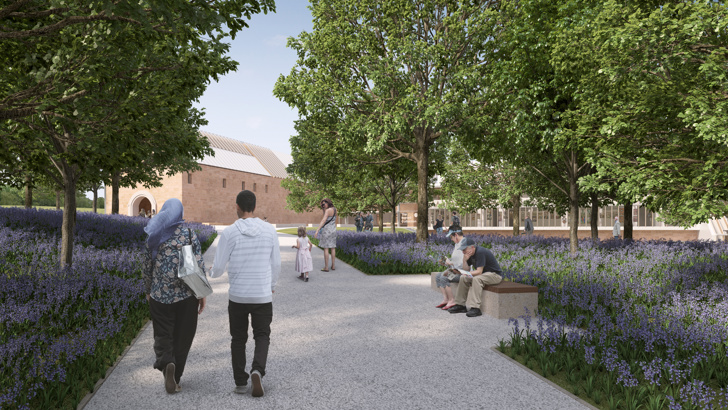
Glasgow’s Burrell Collection is undergoing a huge refurbishment and redisplay within the heart of Pollok Country Park on the south side of the city. With construction work now progressing apace, we caught up with some of the key players working on the project.
Lawrence Fitzgerald, the Project Lead for the refurbishment, said that work is already starting to reveal itself, but that the real progress remained out of public sight. He said: “Anyone who passes through Pollok Park can see the work for themselves. The glazing on what was the café has already been replaced and looks fantastic – and you can see the scaffolding up as the roof is renewed. Of course, this time around the roof will have a slight angle, instead of being flat.”
“Anyone who passes through Pollok Park can see the work for themselves. The glazing on what was the café has already been replaced and looks fantastic – and you can see the scaffolding up as the roof is renewed. Of course, this time around the roof will have a slight angle, instead of being flat.”
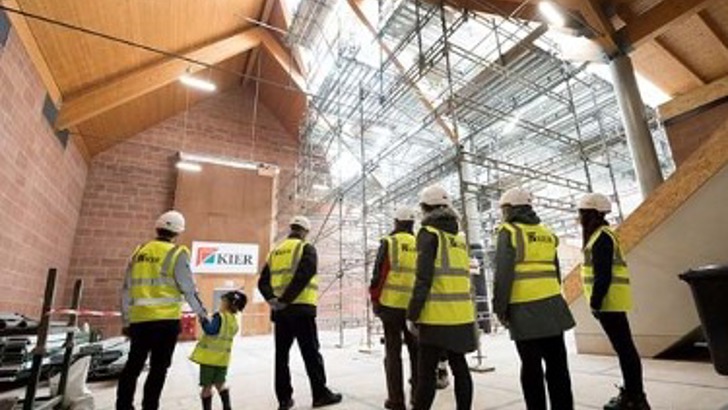
Lawrence, who worked on construction of the Riverside Museum, which opened to the public in 2011 to huge critical and public acclaim, added:
“The real magic is happening inside the building and isn’t visible to the public. We’re carefully constructing the new central core which will be the way that people access three floors of incredible displays and storytelling. This is all having to be done within a Grade-A listed building, with hugely important architectural features. It may seem like a small thing, but in parts of the building you can already see new power and data points, connectivity that was never in the fabric of the old building – but that’s been achieved by lifting huge limestone and sandstone floors and replacing them in a way which makes it look like nothing has been touched. The engineering and work being carried out by our contractors is precise and done with real care and attention.”
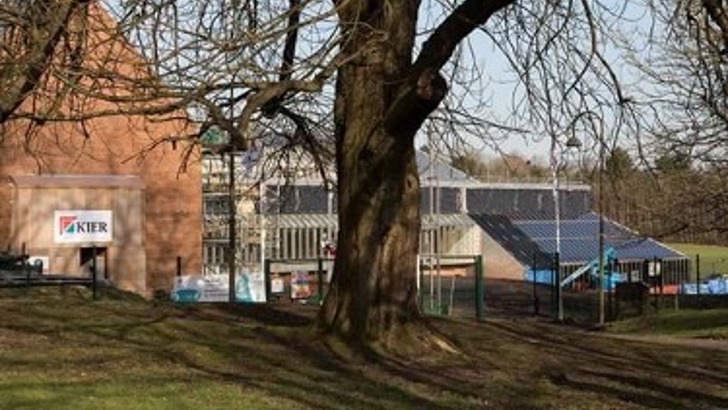
Since December 2018, as part of an extensive community engagement programme, curators have been working with 40 nursery school children from the nearby Pollok Children’s Centre, using objects from the collection to test stories which might form part of the new museum. The centre is located close to the Burrell Collection and this new relationship will be continued once the museum reopens.
To date, there have been eight sessions with more than 40 three and four-year-olds – one of the main focuses has been on medieval tapestries, including Peasants Preparing to Hunt Rabbits with Ferrets. Caroline Currie, Learning and Access Curator at the Burrell, said:
“They were especially excited to spot the bear hiding in the undergrowth - and sing the rabbit stew song which directly relates to the tapestry. The children really enjoyed the opportunity to handle objects relating to the Burrell and produced artwork based on their trips to Kelvingrove and the Glasgow Museums Resource Centre. For some, it was their first time in a museum.”
Caroline added:
“We are working with a large number of community groups, understanding what interests them and how their lives and experiences can relate to the collection – all of which is informing our work on displays and stories within the new gallery. We want everyone to have a connection to the collection and to build on those relationships long after the building has re-opened.”
Sir Angus Grossart has been leading Burrell Renaissance. He has been spearheading fundraising efforts and has donated £1 million to the project. He said:
“Sir William Burrell gave Glasgow of the world’s single, finest collections and we are creating a world-class home for his incredible gift – but more than that, we are making this incredible collection connect to audiences both at home and across the globe. It will be an icon for the ages which reinforces Glasgow’s position as a global cultural player.”
I am really looking forward to seeing the building shine once again. I’ve no doubt the people of Glasgow will welcome the return of a revamped and renewed part of their cultural family.
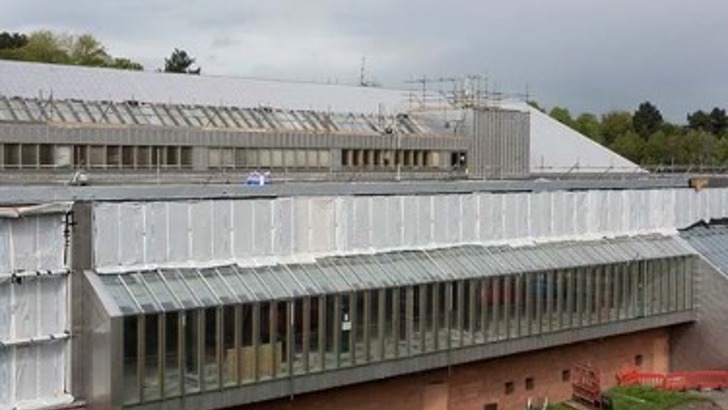
Burrell Facts
The £66 million project is funded by partners including Glasgow City Council (£33 million), the Heritage Lottery Fund (£15 million), Scottish Government (£5 million), UK Government (£5 million) and is backed by Burrell Renaissance which is raising funds from trusts, corporate and individual donors and raising the profile of the collection in the UK and around the world through loans and touring. The Chair of Burrell Renaissance, Sir Angus Grossart, has donated £1 million to the project.
The Burrell was opened to the public in 1983 by The Queen. The Burrell Collection is one of Scotland’s greatest cultural assets. Reflecting one of the world’s finest single art collections, it comprises some 9,000 artworks and objects gifted by Sir William and Lady Constance Burrell to the city of Glasgow in 1944. It has been described as Glasgow’s cultural passport to the world.
The Burrell Collection displays objects from Europe and Asia representing five millennia of art and history. The focus is on late medieval and early Renaissance Europe but the collection also contains important examples of Chinese and Islamic art, artefacts from ancient civilisations and collections of fine art. William Burrell (1861–1958) was interested in contemporary art. His first purchases were of Scottish, French and Dutch late 19th century art. Particular passions were the Parisian artists Manet and Degas, the sculptor Rodin and the Hague School artists Anton Mauve and Matthijs Maris. His European paintings collection also includes a Bellini ‘Madonna and Child’ and a self-portrait by Rembrandt.
The Burrell Collection closed to the public in October 2016, allowing work to commence on a £66 million refurbishment of the Grade A category building and redisplay of the collection to create a new, more modern visitor experience.
Before the museum’s temporary closure, only 20% of the exceptional collection was on display. Plans for the refurbishment and redisplay of the Burrell will see the museum’s public space increase by 83% and gallery space increase by 35% with store rooms on the lower ground floor open to the public for the first time. A re-interpretation of treasures of the collection will also tell much more of a story about their importance and how they were collected.
As well as improved facilities including new café and retail space, landscaped terraces will link the museum to its outstanding woodland setting.
The Burrell Renaissance project is a crucial element of the masterplan for Pollok Park, which will significantly improve transport access to the park and wayfinding within it, connecting natural, historic and heritage attractions. It will also help to better integrate and activate the city’s wider southside cultural offer. Encouraging greater crossover between park users and museums visitors, this coordinated strategy considers the entire Pollok Park estate, including the grounds immediately surrounding the Burrell Collection. The aim is to provide a world-class visitor experience at the heart of one of Glasgow’s prime tourism neighbourhoods, appealing to local, national and international visitors alike.
Pollok Park is the largest park in Glasgow and was voted Best Park in Europe in 2008. Its heritage features are significant as, in addition to the Burrell Collection, it includes another of Scotland’s most important museums; Pollok House as well as a green space of national significance.
While the Burrell Collection has been closed, Glasgow has taken the opportunity to show some of the treasures of the collection to the world through a number of international exhibitions across the UK, Europe, North America and Japan – raising the Burrell’s global profile and promoting Glasgow as a leading cultural destination which is home to one of the great art museums of the world.

